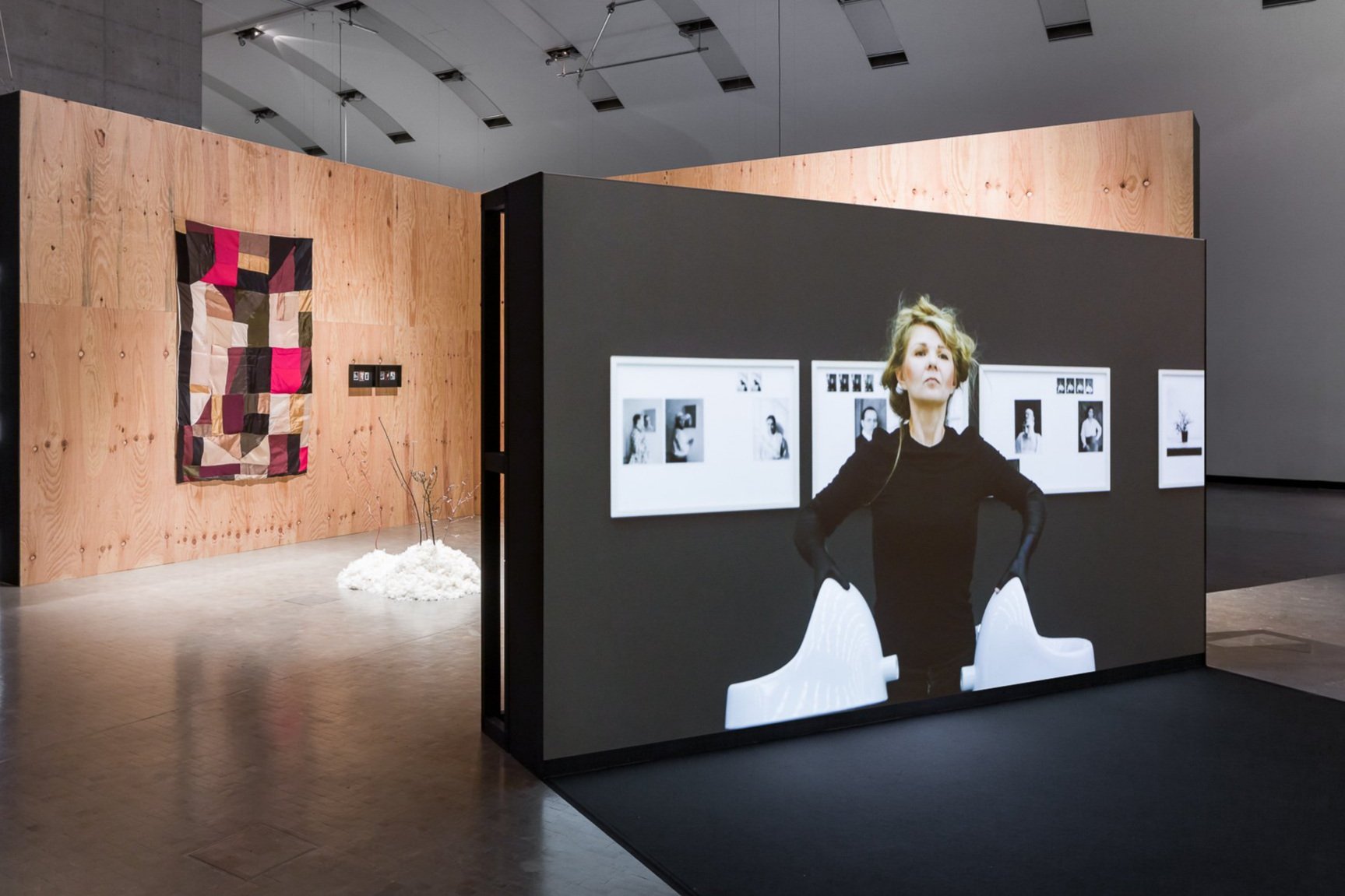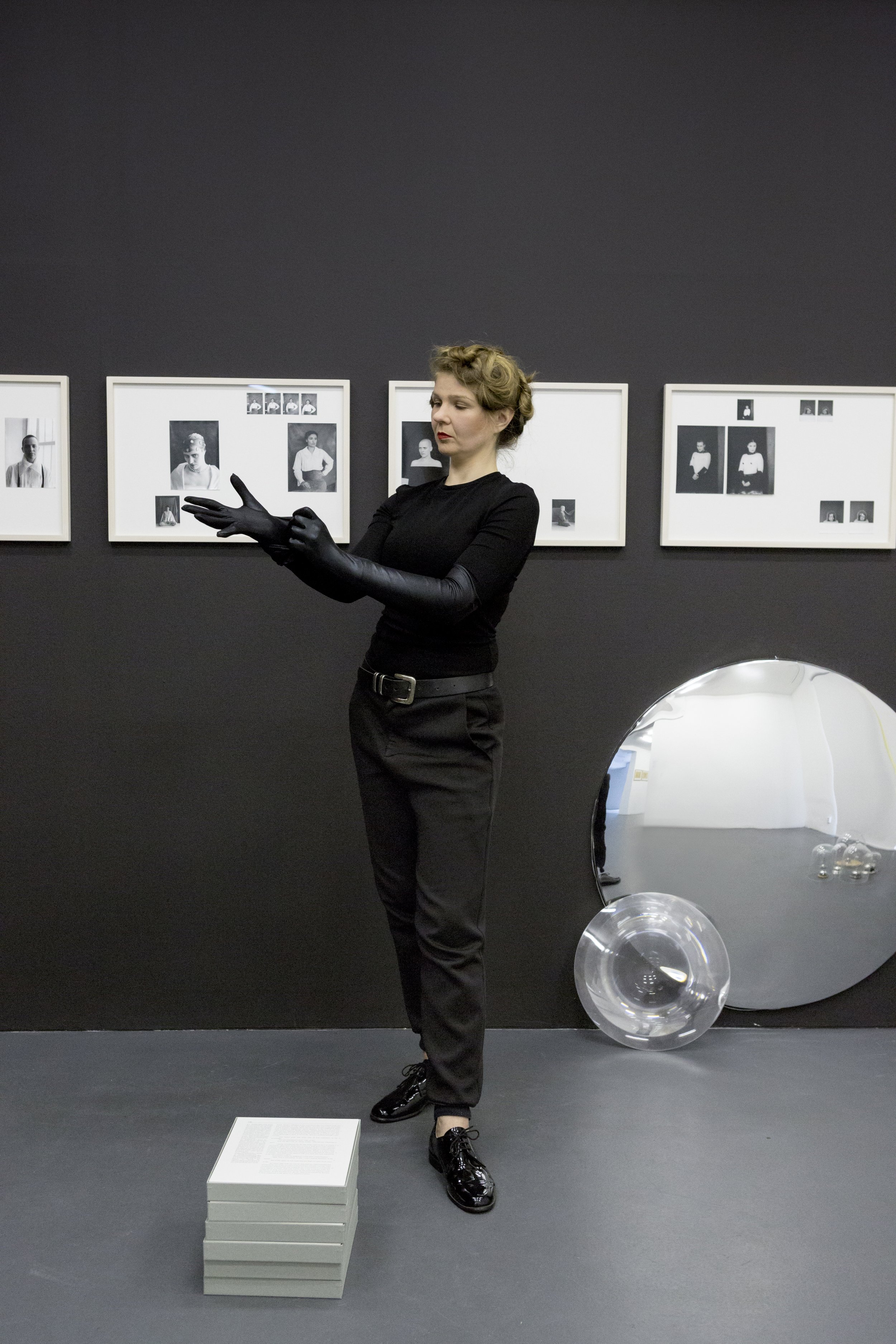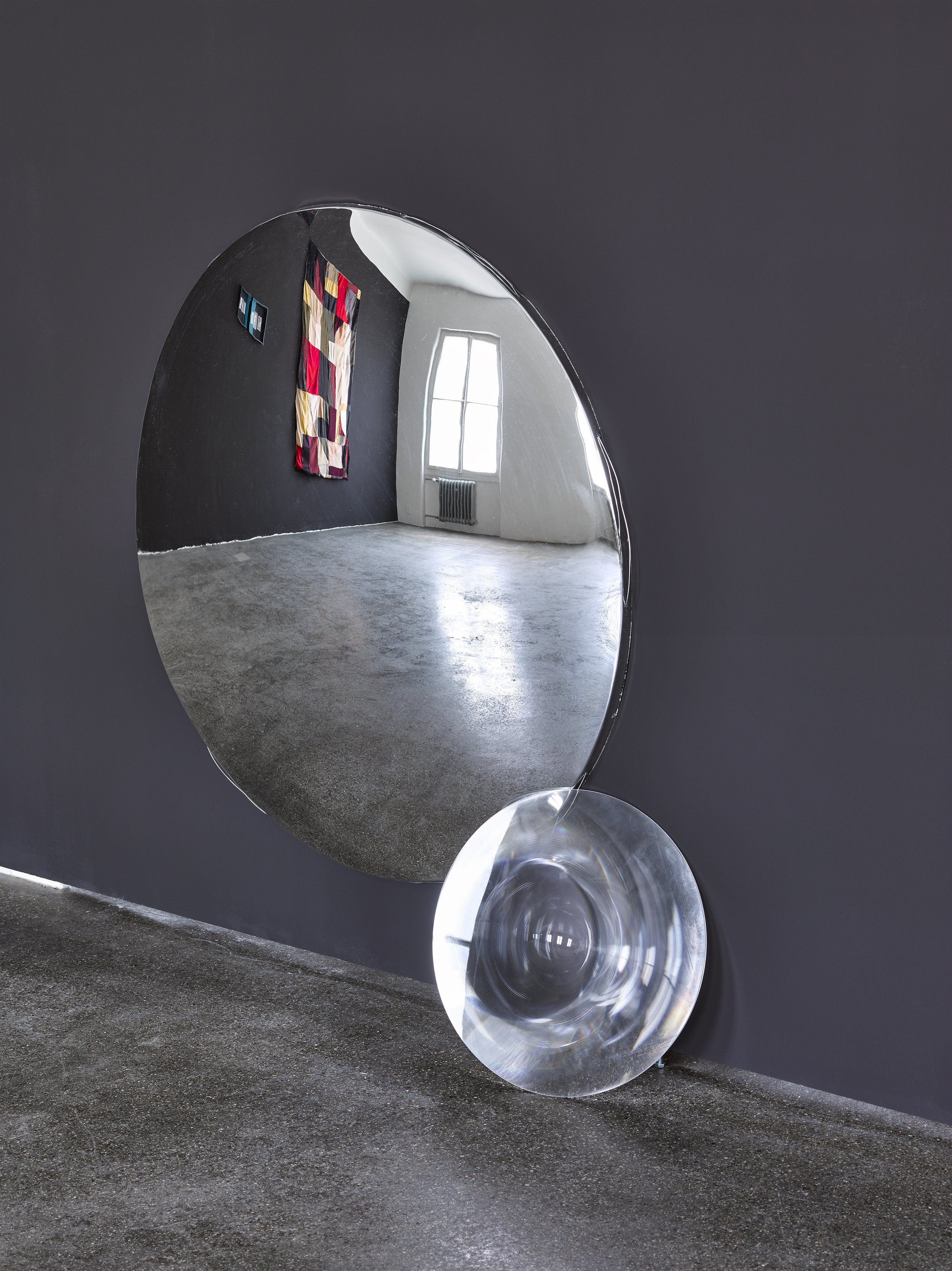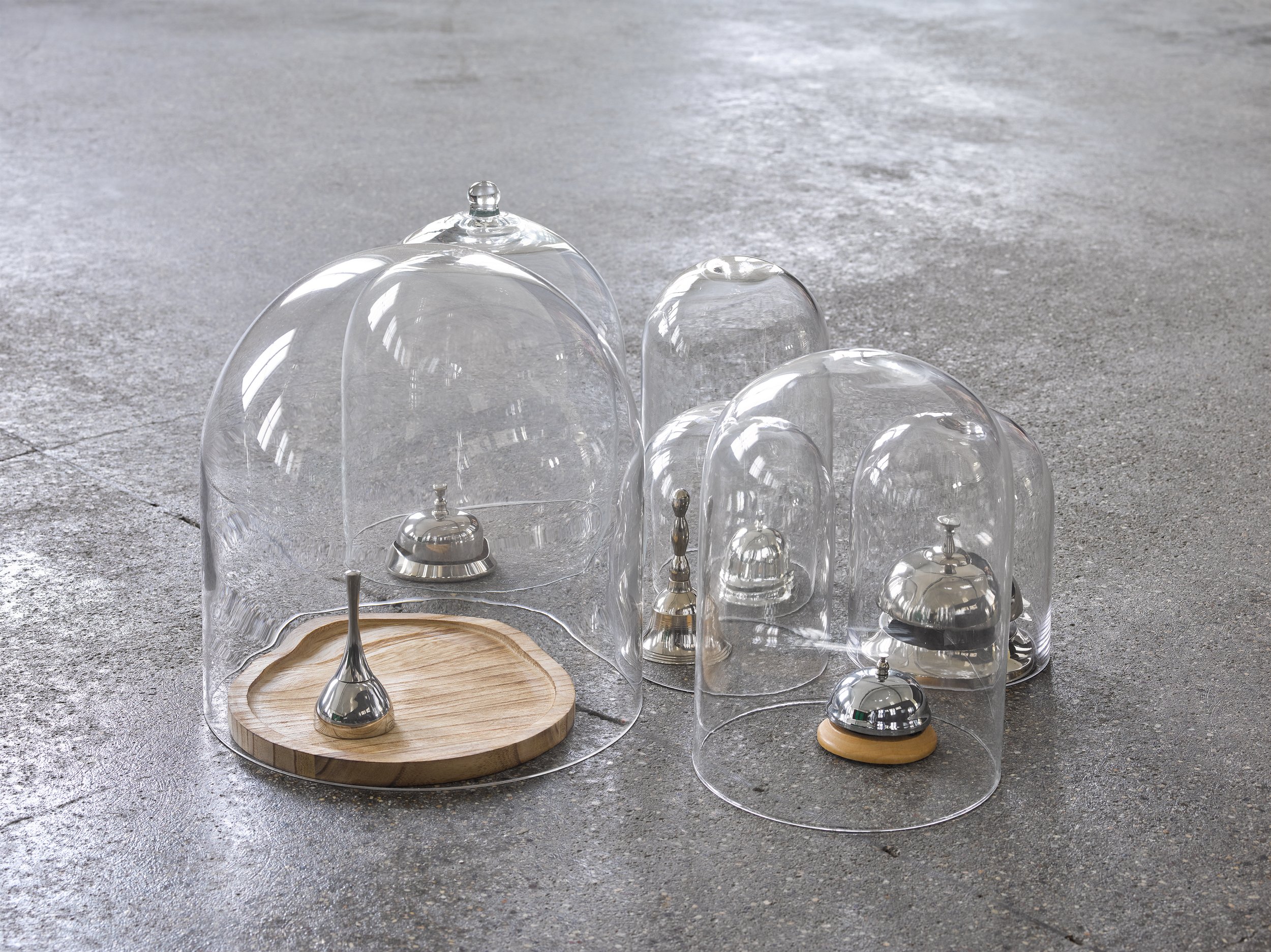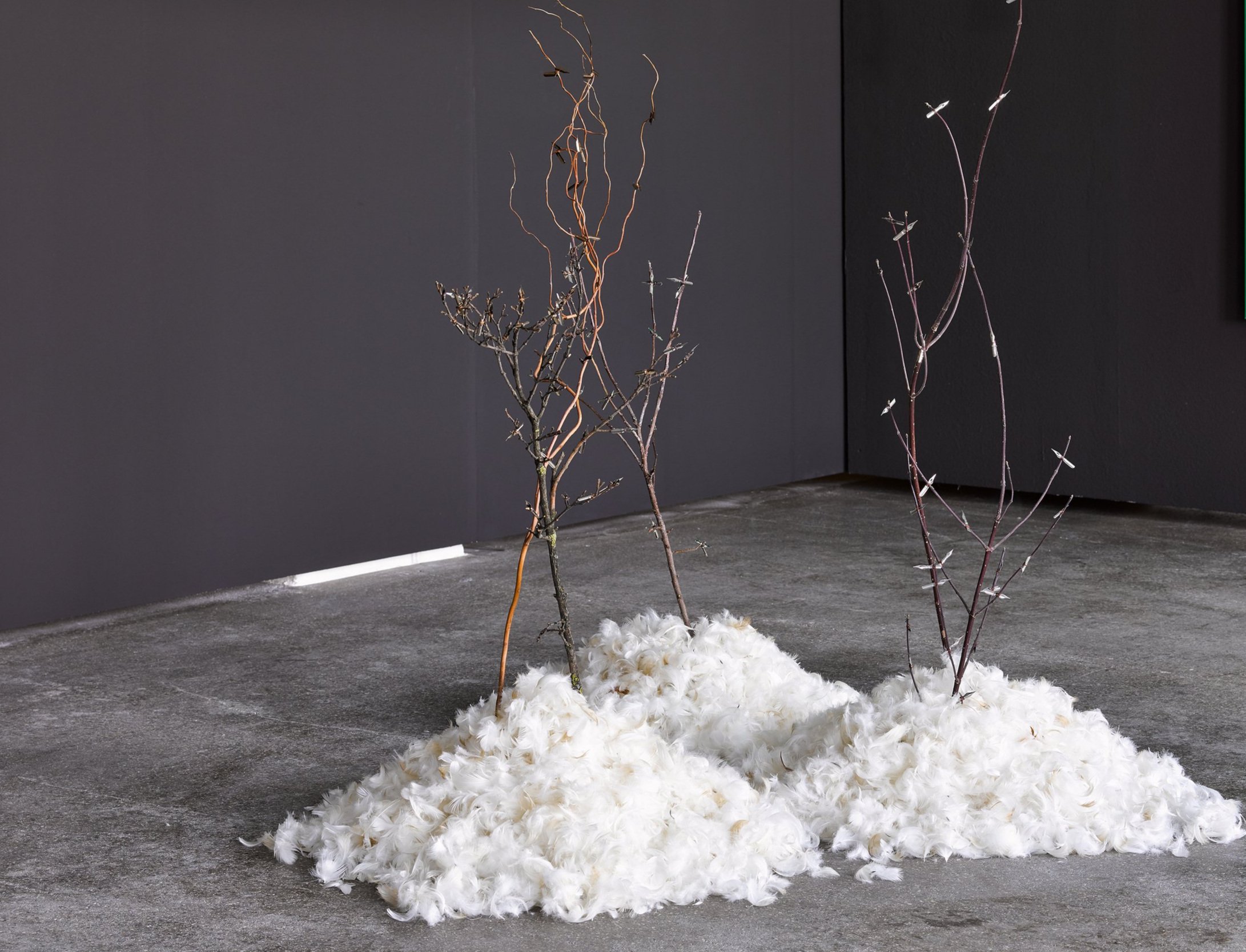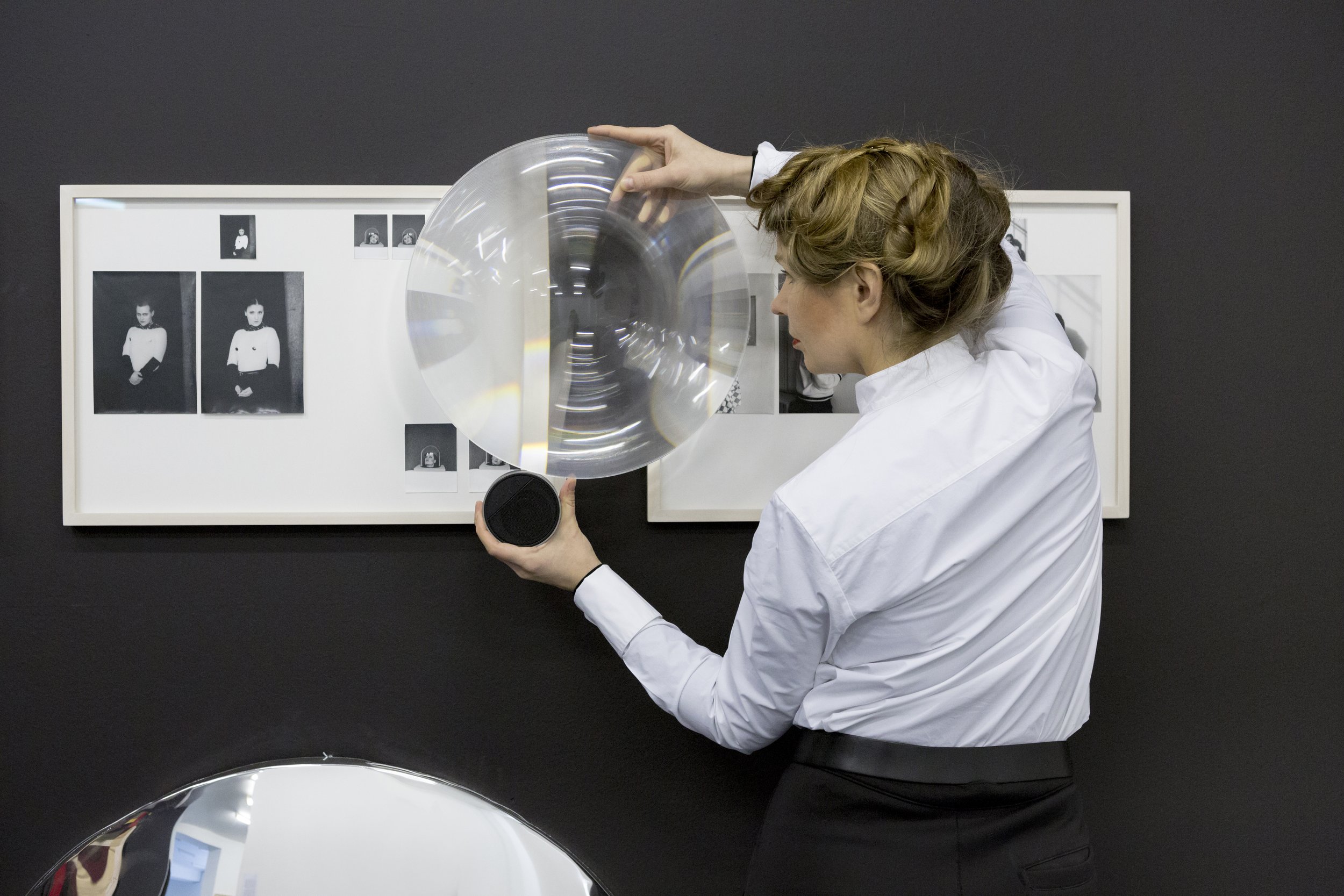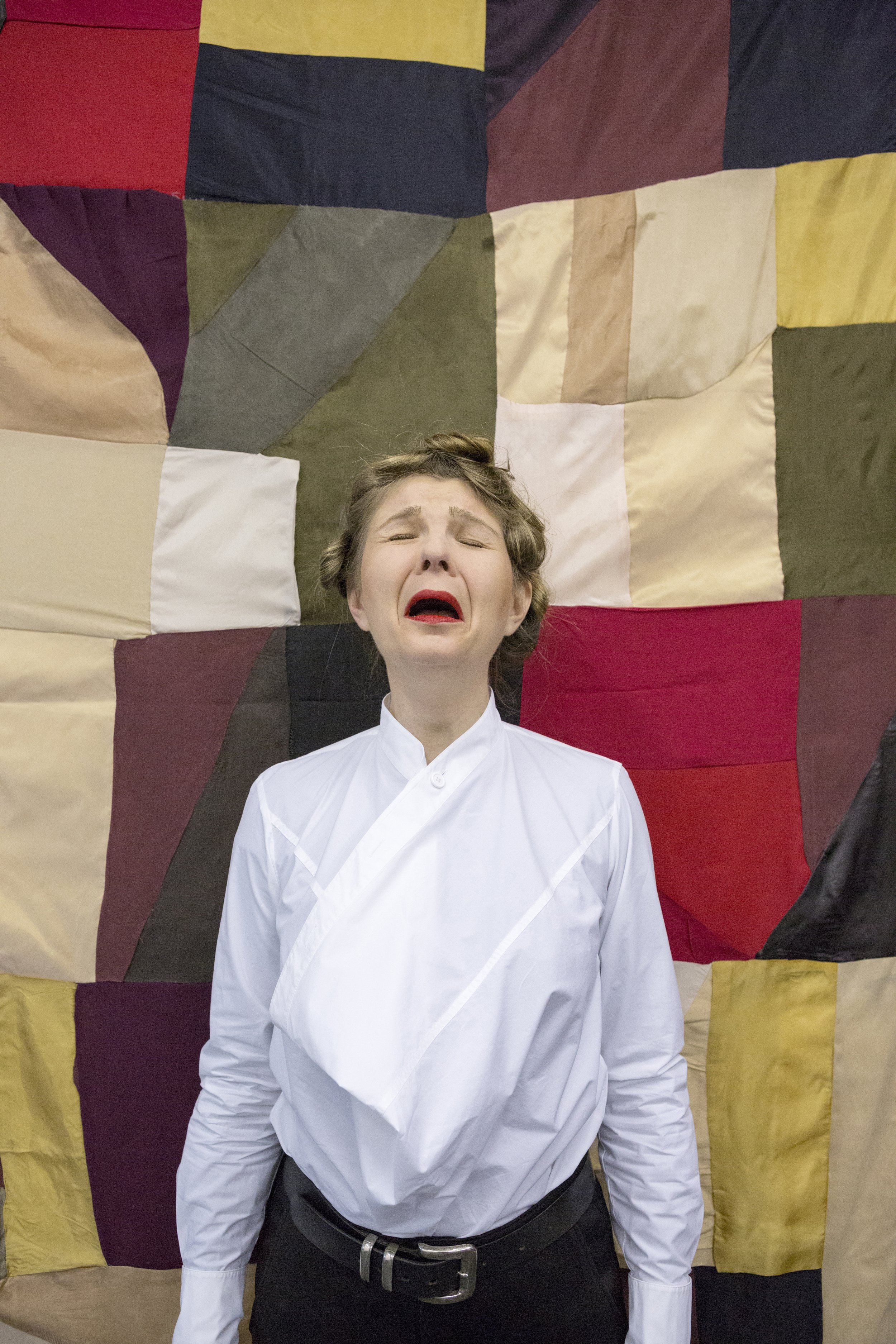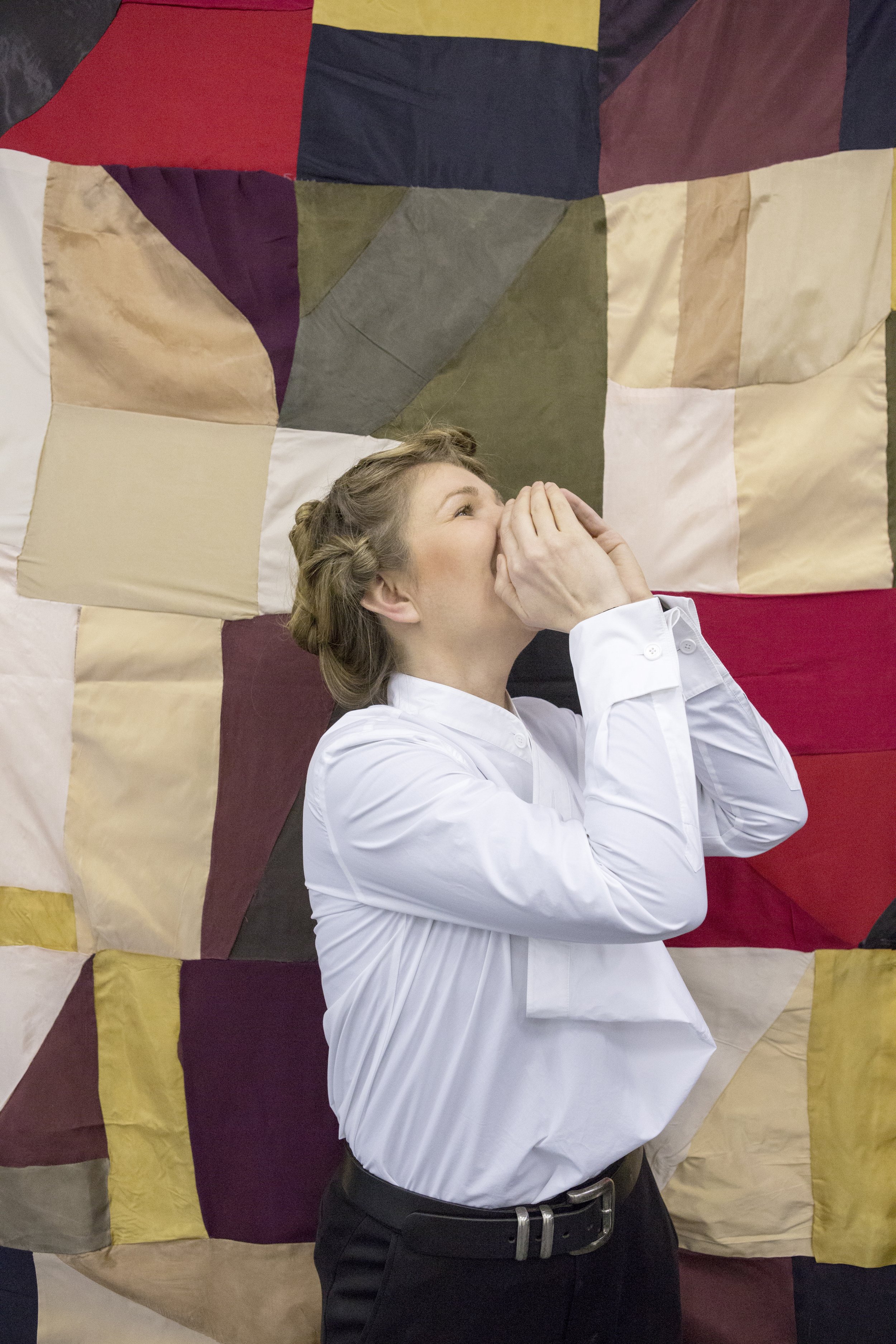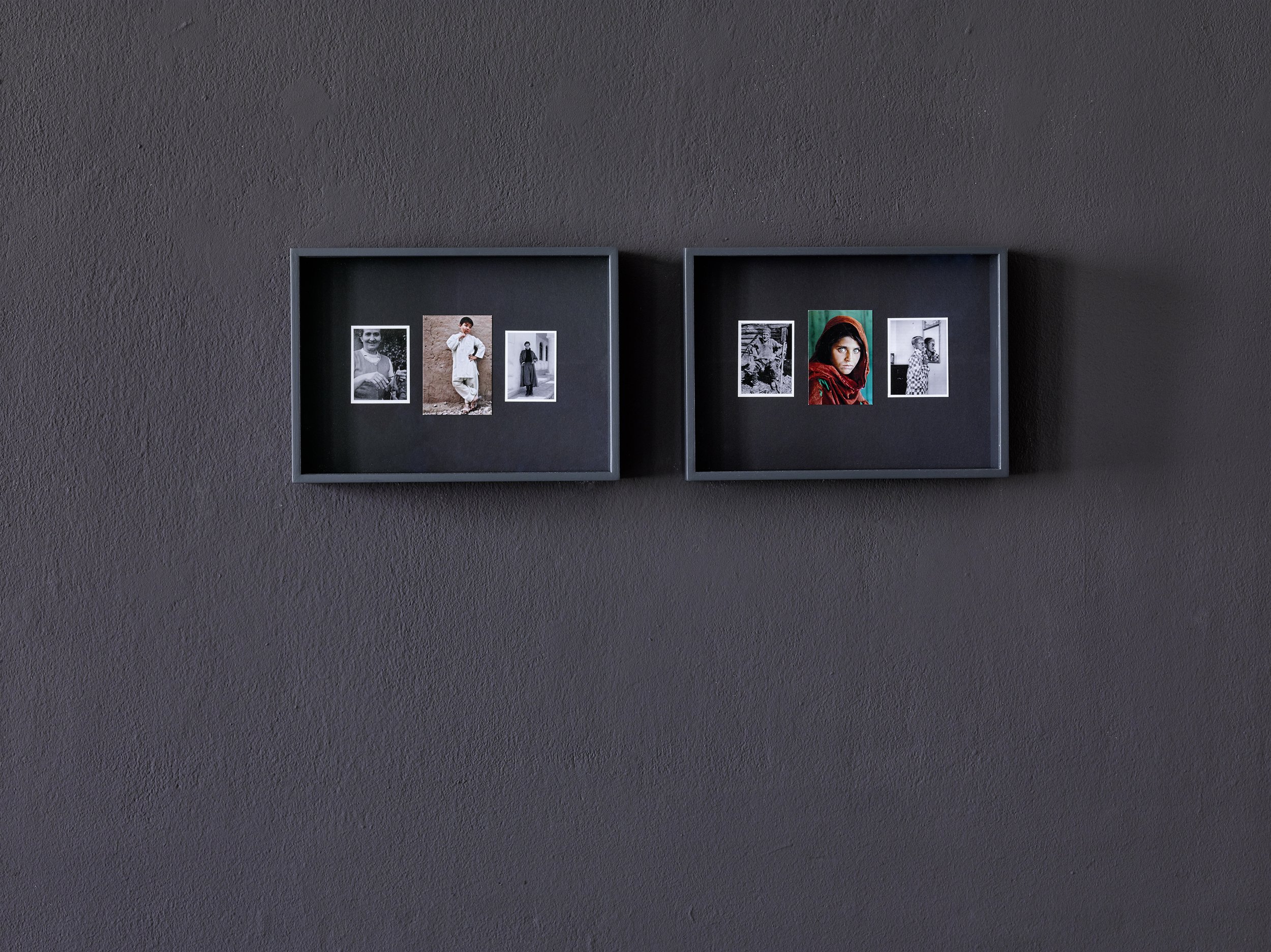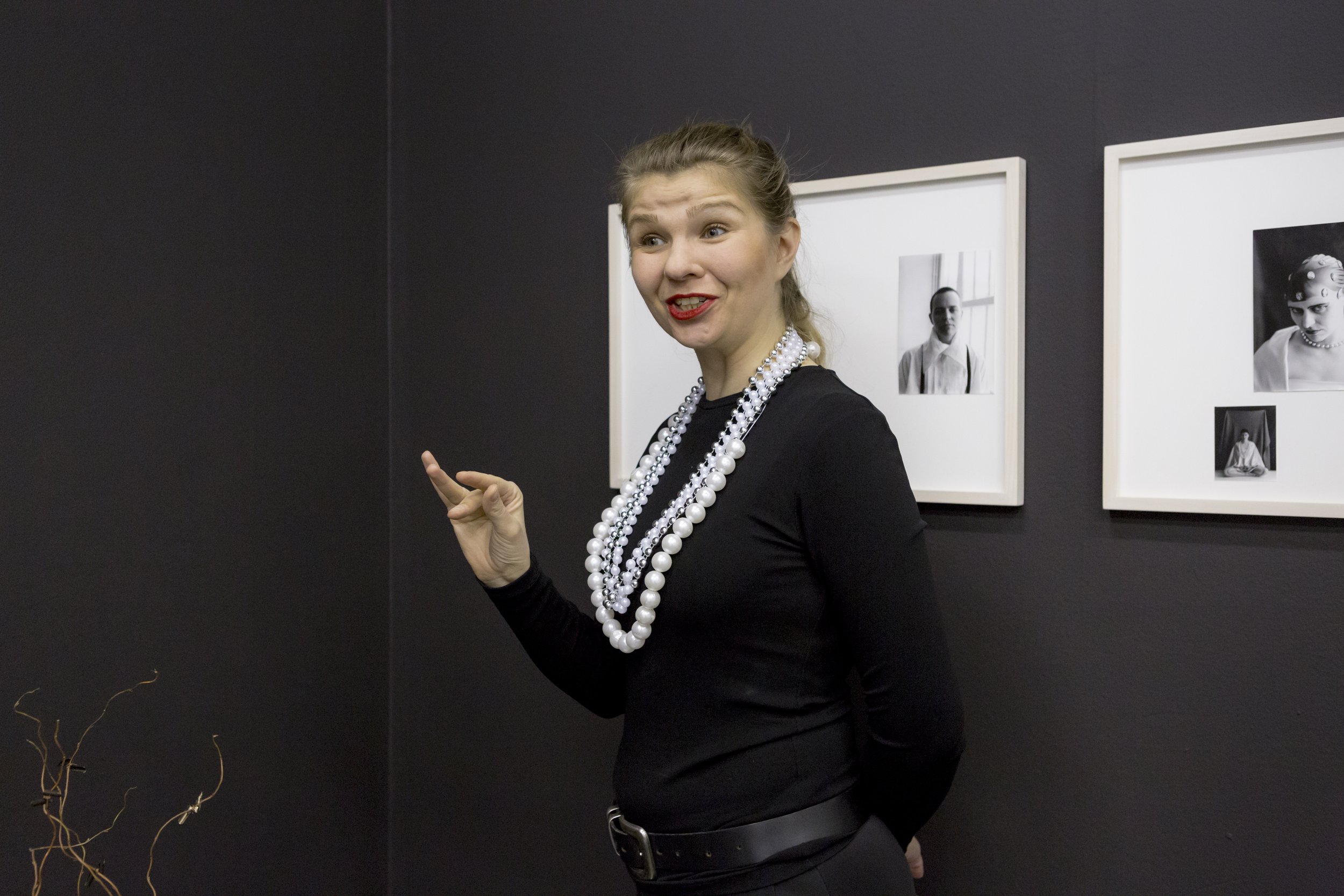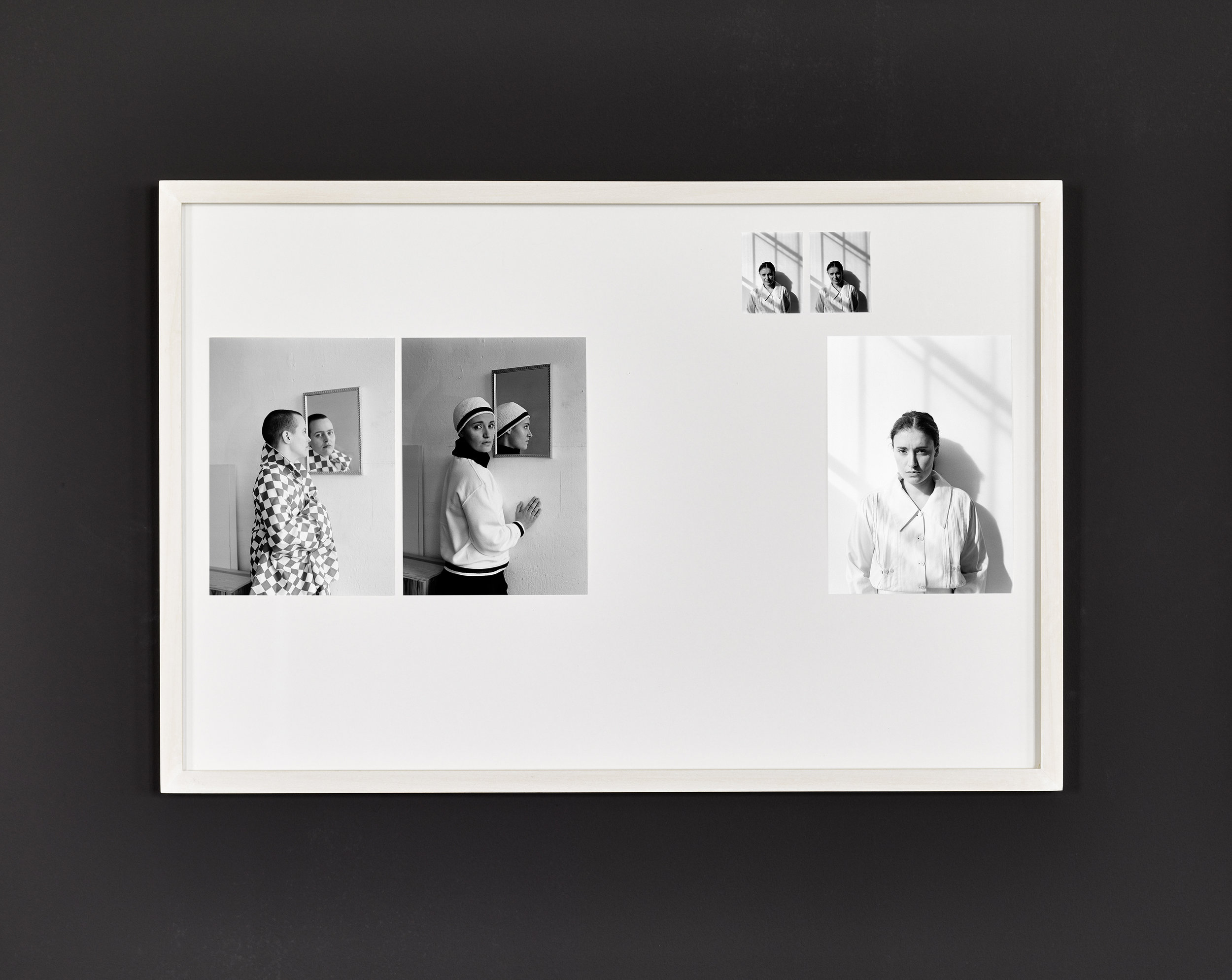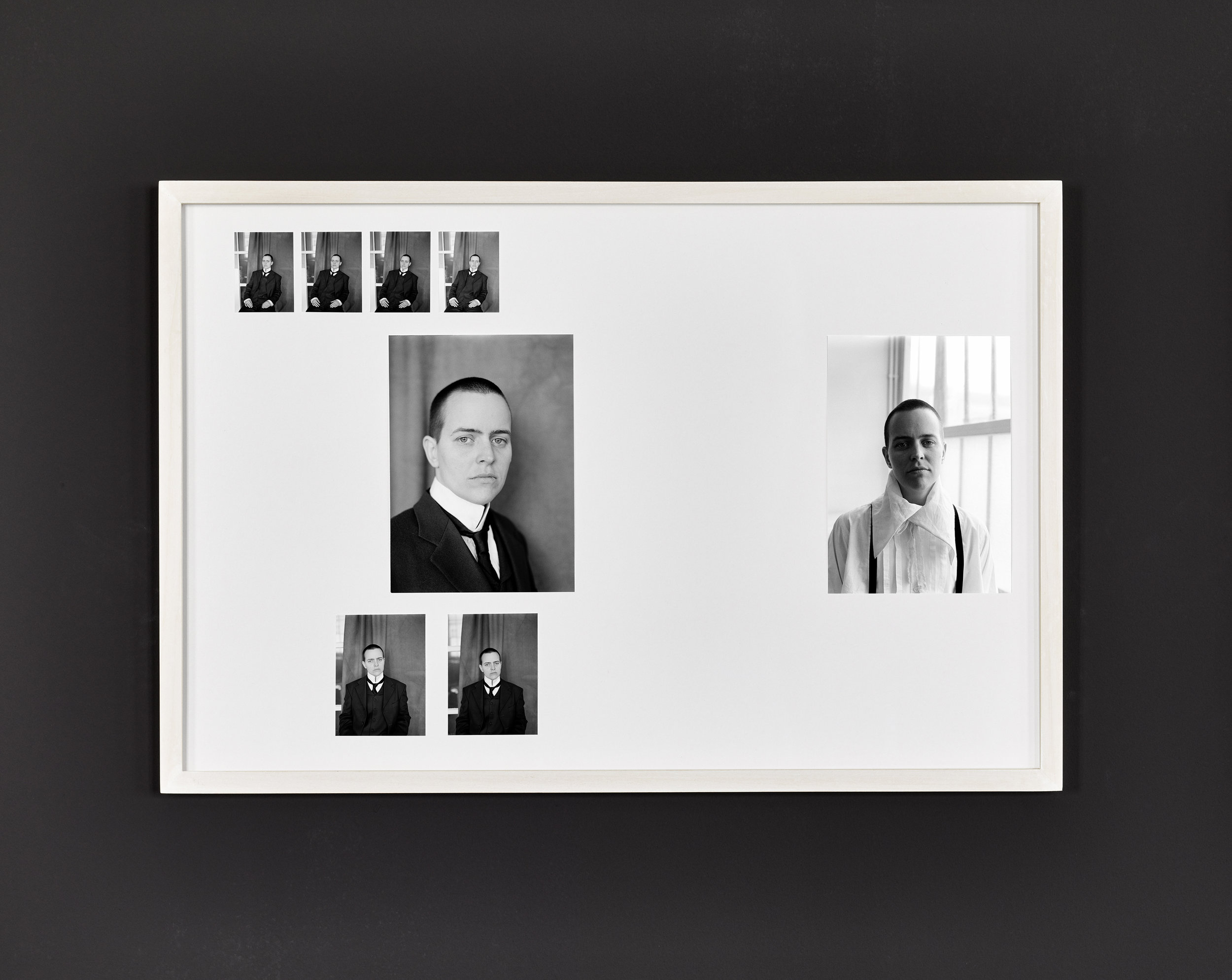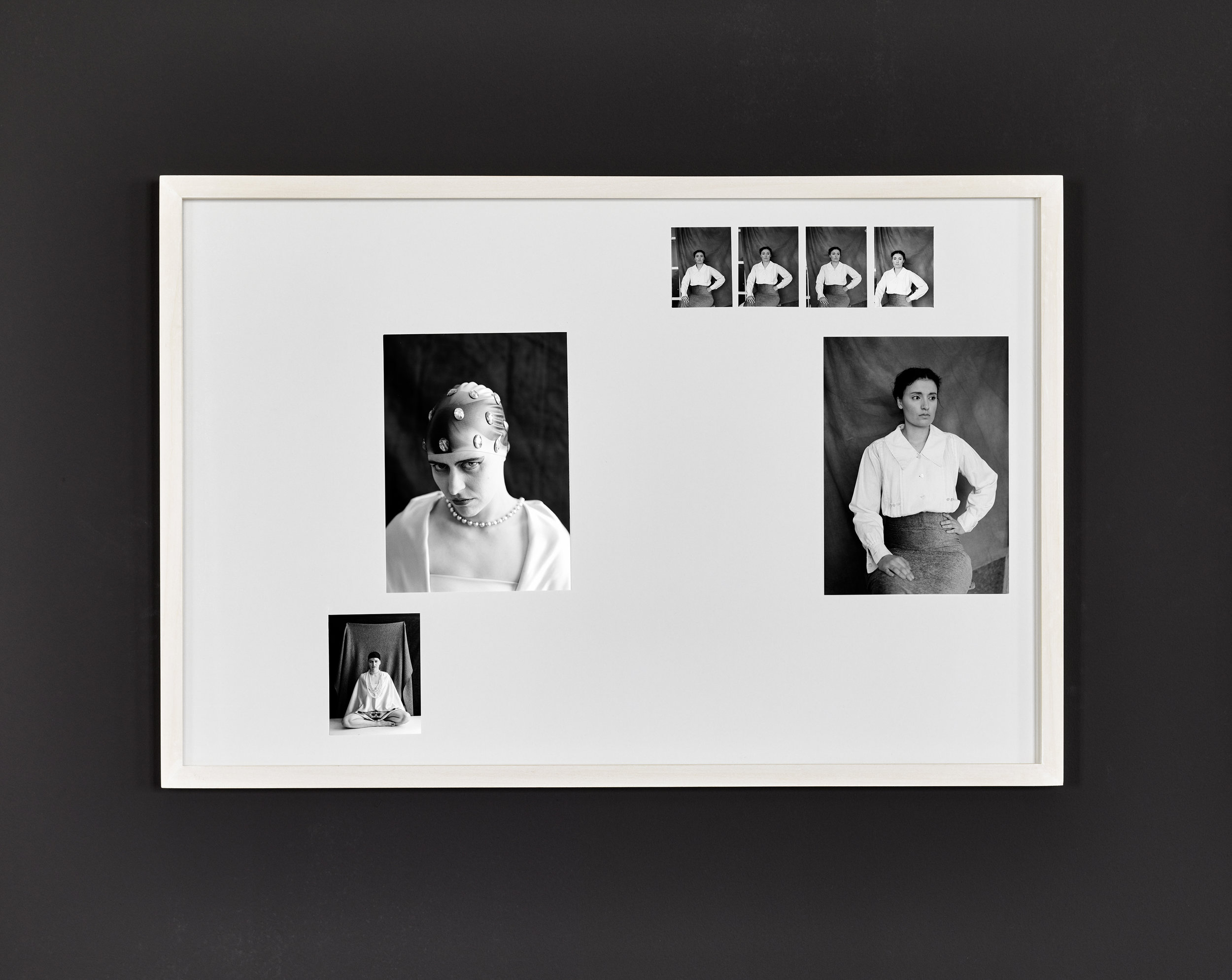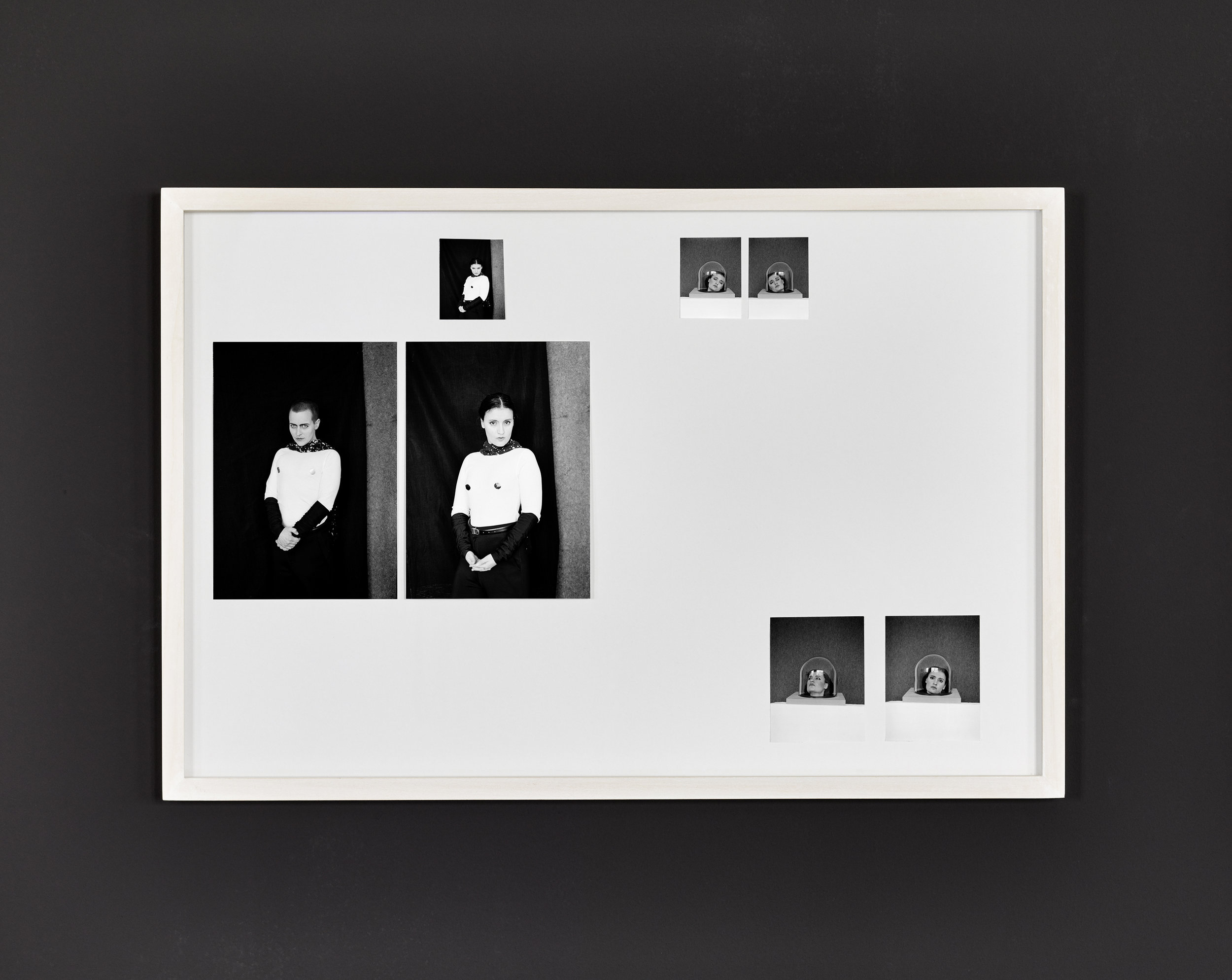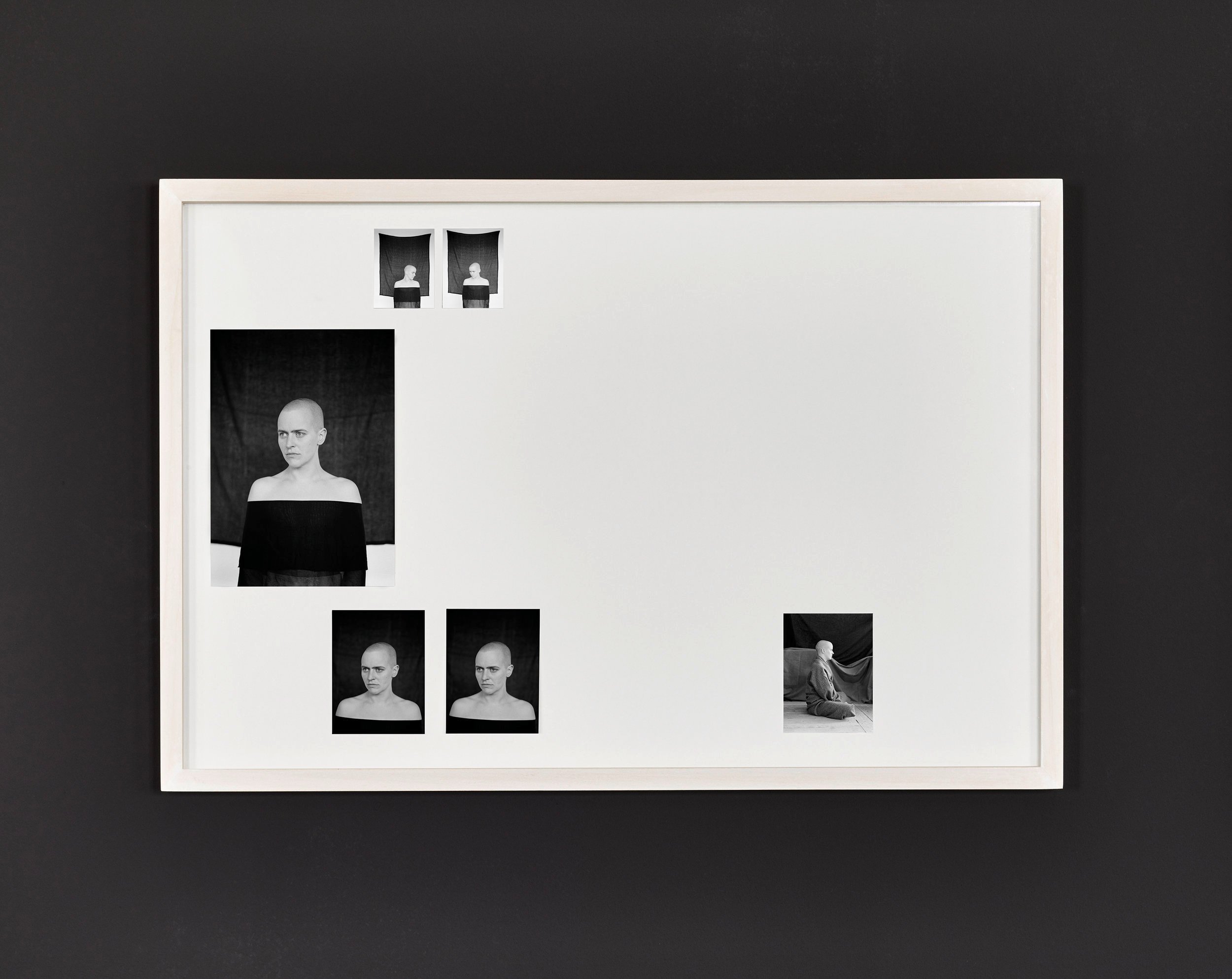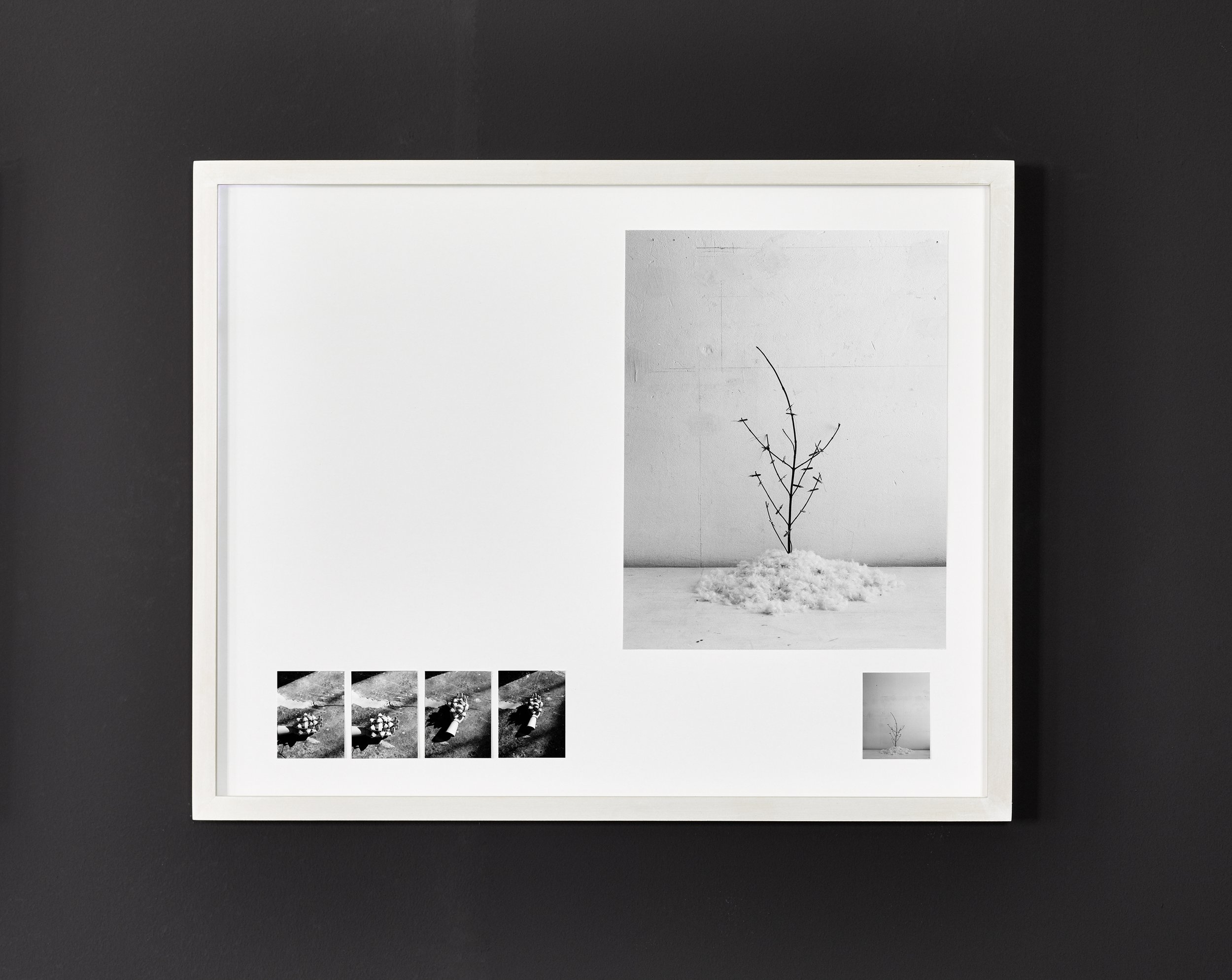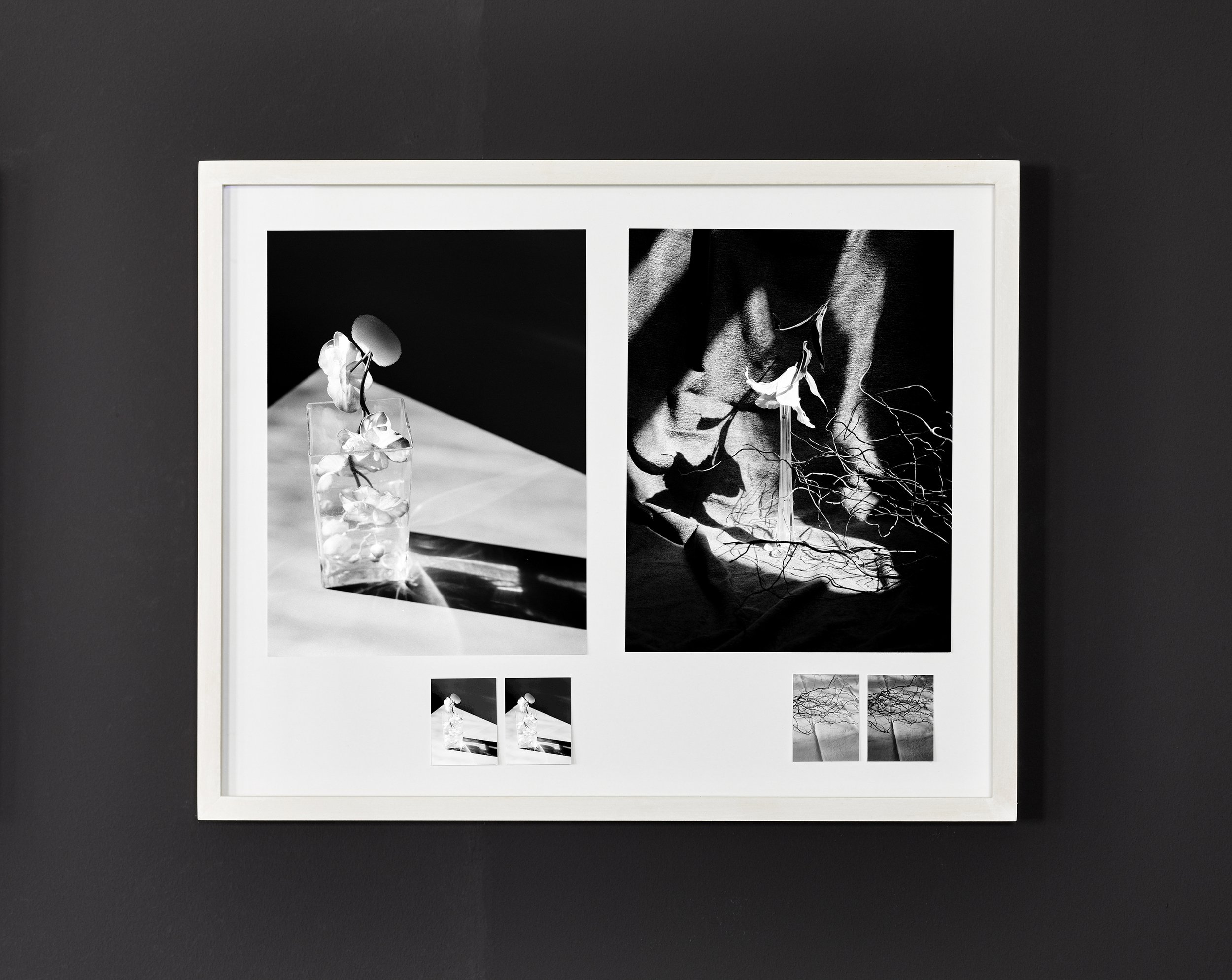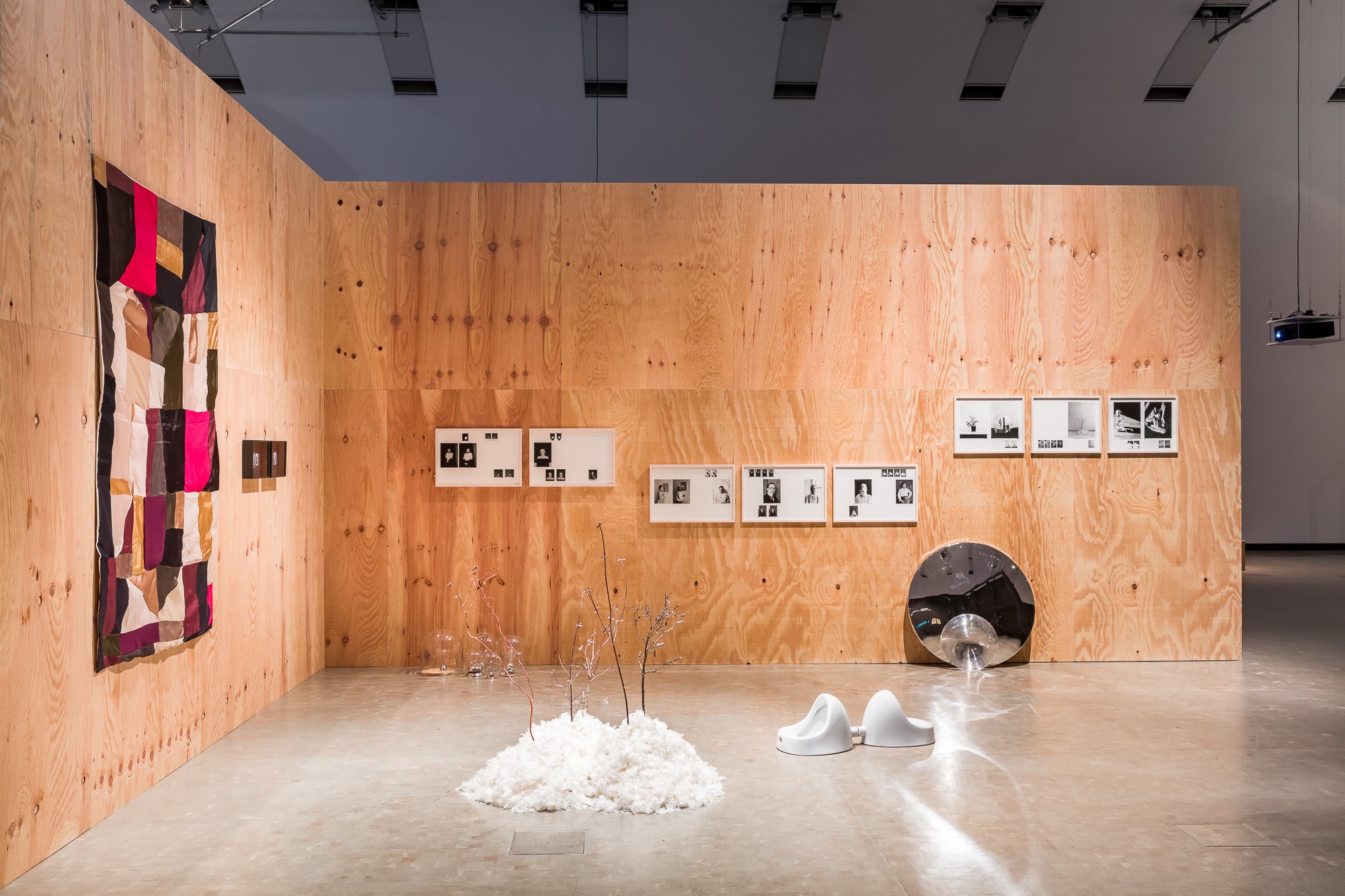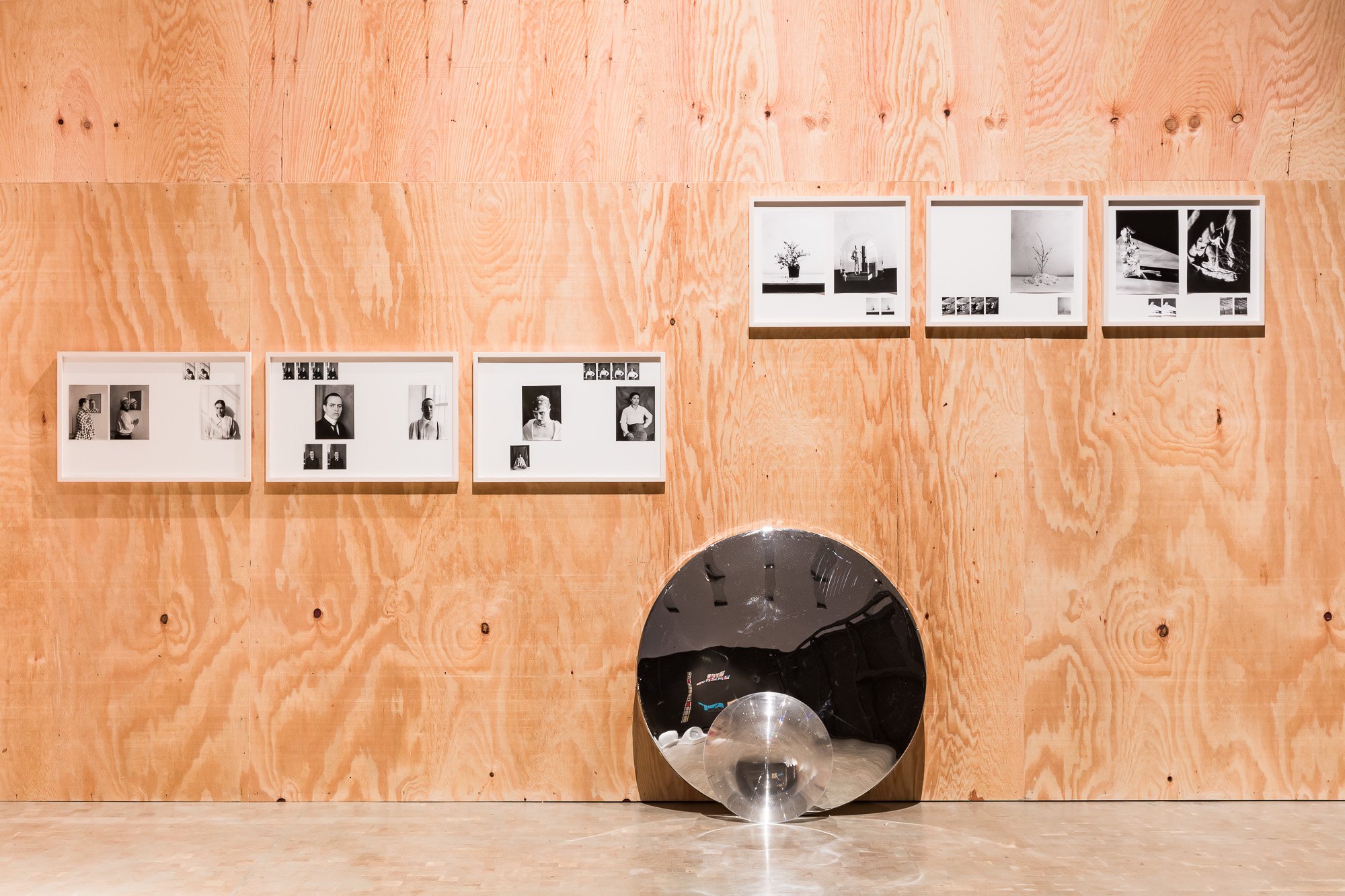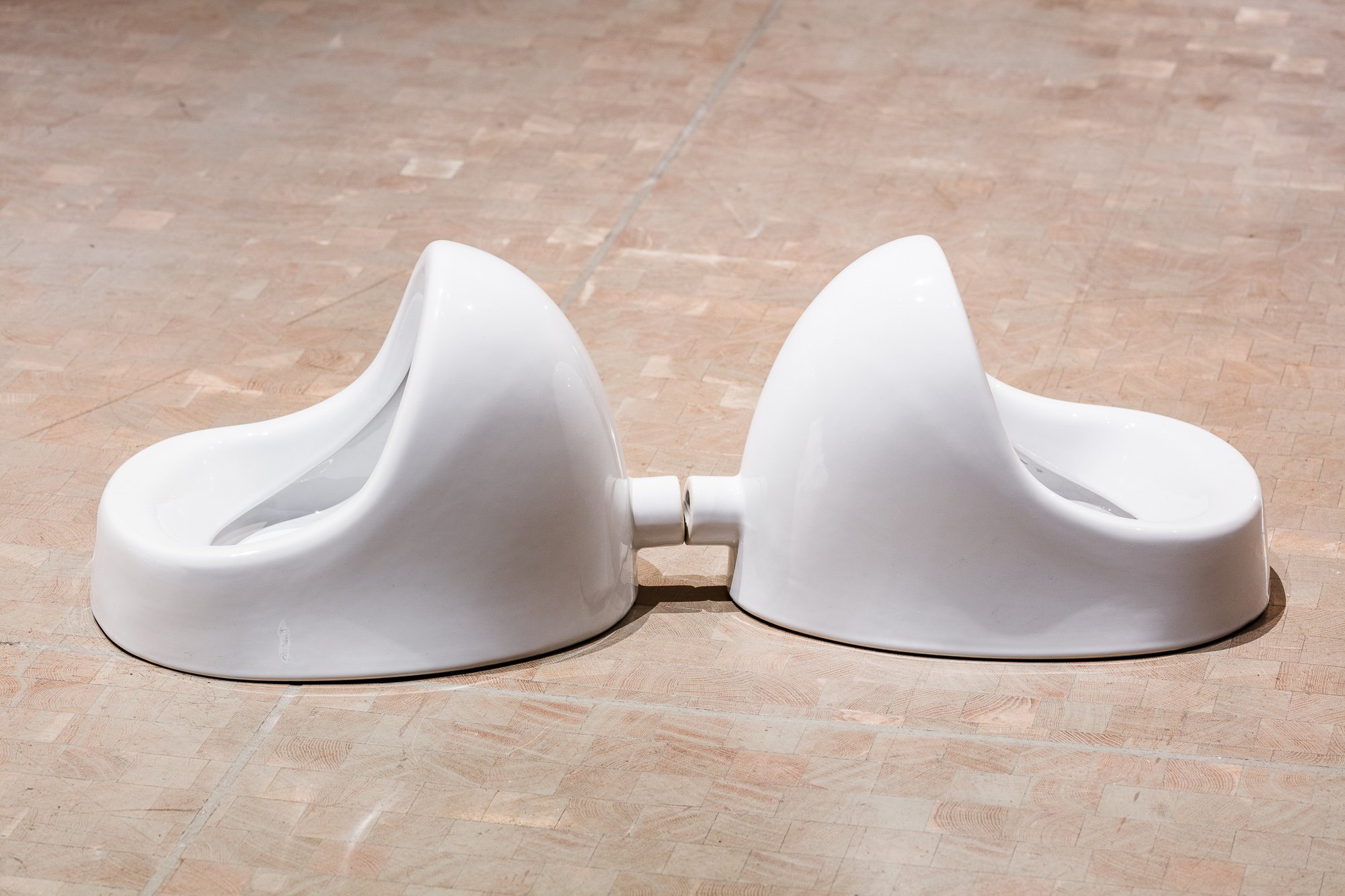Non-aligned Relatives, 2016–2021
Work series
“Non-aligned” refers simultaneously to the political Non-Aligned Movement and to a political and cultural refusal to align to normative models and behaviors. In the series Non-aligned Relatives Ana Hoffner ex-Prvulovic* questions the legacy of cultural politics of non-aligned countries, however not in a historical manner but rather to extend the notion of non-alignment to the politics of collections and collecting as a practice. What kind of artistic practice can arise from non-alignment if non-alignment is understood as a questioning of property relations, ownership, and inheritance? What kind of kinship formations arise out of non-alignment if non-alignment also means disentangling the heteronormative family from its constitutive rights to private property?
Non-aligned Relatives, 2021
Video installation, color and sound, 16:9
Non-aligned Relatives is a new version of a performance by the artist*, shot in the actual exhibition space during setup, with the same props but in a slightly different setting. Appropriating stories, reenacting scenes, reproducing images, and reconfiguring objects from collective and personal memories, the artist* performs sequences where she* embodies the personae of her* queer family album, her* chosen non-aligned relatives, and activates her* collection of chosen avant-garde artists. Through her* manipulation of symbolic objects and through the songs and poems that she* meticulously chants, she* pays extreme attention to the materiality and the physicality of the processes of remembering, of assembling, and of collecting. It is through materiality and embodiment that she* reassembles memories of the family and that she* establishes connections between her* imagined relatives and historical artists across space and time. In doing so, she* creates a lively archive of queer familiarity, a collection beyond heteronormativity and linearity, asking, finally, what constitutes a familial assemblage beyond reproduction.
Simultaneous Contrast, 2018
Various textiles, 160 x 220 cm
Simultaneous Contrast is a fragile textile patchwork piece sewn by hand by the artist* herself* from recuperated garment linings (made out of silk, velvet, or chiffon) and hung on the wall. The textiles, originally sewn inside clothes to soften their touch or to structure their shape, are delicately brought together as a blanket that presents itself as a painting, merging abstraction and applied arts. The pattern, the colors, and the title evoke the work of Ukranian French painter and fashion designer Sonia Delaunay (1885–1979), a representative of geometric abstraction and a key figure of the European avant-garde. Her approach was based on the notion of “simultaneity”, understanding colors as having independent lives acquired when liberated from subject matter or combined with other colors and inventing spaces where form, color, and rhythm communicate. Sonia Delaunay explored the possibilities of simultaneous contrast in a range of media, from painting, to costumes and fashion design, to bookbinding, domestic objects, and posters, creating a work that was simultaneously aesthetically engaging and philosophically utopian. Ana Hoffner ex-Prvulovic* pays tribute to this major female artist and at the same time interrogates the place of women artists in the dominant narratives of the Western avant-garde.
The Queer Family Album – Non-aligned Relatives, 2018
C-print and silver gelatin prints in 2 boxes, each 29.7 x 21 cm
Two black rectangular frames lined with black mats. Arranged in the middle, three pictures in each frame. This is the formal structure of The Queer Family Album (2018), an ongoing photographic series that brings together portraits from various contexts and puts them in a queer and deliberately chosen familial relation. The work emphasizes kinship over genealogy, multipolar families over a heterosexual-couple nucleus, and self-determination over filiation. The Queer Family Album – Non-aligned Relatives roots Ana Hoffner ex-Prvulovic*’s practice in a queer and politically engaged artistic tradition, one critical of all hegemonic models forged by the West and expanded throughout the world, whether they be social, cultural, or economic.
The first image one might identify is the iconic portrait of the Afghan refugee girl, Sharbat Gula, who made the cover of National Geographic in 1985, and then the cover of Deborah Ellis’s best-seller book, The Breadwinner (2000). The other images are portraits of people performing diverse forms of gender identity: a bacha posh (a young Afghan woman who lives as a boy, mainly to escape patriarchal oppression) and Swiss writer Annemarie Schwarzenbach, who passed as a man during a drive from Geneva to Kabul in 1939. On the far-left side of the diptych is a portrait of the artist*’s grandmother, in her house in Southern Serbia, which she built herself in the 1960s. Born in 1927, she survived World War II and the wars in the 1990s, experiencing various political systems, from a monarchy to socialism, as well as the governments of the first and second Yugoslavia. Mixing familial lineage and chosen kinship, merging individual psyches and collective memories, and interlinking inherited structures and tactics of flight, Ana Hoffner ex-Prvulovic* makes inquiries into her* own self, as both a product of, and a person in constant resistance to, heteropatriarchal regimes. Additionally, conceiving of all the pictured people as her* “non-aligned relatives” is a way to reactivate cultural proximities and historical attachments that were born as part of a utopian vision for an alternative geopolitical scenario for the world (albeit one that failed in the face of the hegemonic force of international capitalism) and to refuse the mystification of a Western-conceived, monolithic Europe.
Disavowals or Cancelled Confessions, 2016
5 frames with silver gelatin prints on Baryta paper, each 60 x 40 cm
Disavowals or Cancelled Confessions (original title Aveux non avenus, 1930) is the English translation of a book by artist, poet, performer, photographer, and resistance fighter Claude Cahun (1894–1954, born Lucy Schwob). The book is an anti-realist autobiography, a sort of antimémoire consisting of a collection of poems, aphoristic philosophical fragments, and recollected dreams. It is illustrated with Surrealist photomontages—self-portraits, bodily displacements and rearrangements, object assemblages—made by Claude Cahun (often together with her lifelong partner and collaborator Marcel Moore, born Suzanne Malherbe). In the pictures, as in the texts, Claude Cahun tackles common representations of identity, gender, and subjectivity and presents the self as an accumulation of selves or as a shifting set of social relations to be played with. “Shuffle the cards. Masculine? Feminine? It depends on the situation. Neuter is the only gender that suits me.” The five items of Ana Hoffner ex-Prvulovic*’s series, bearing the same title as Claude Cahun’s book, recreate with two models some of the most famous photographic portraits of/by Claude Cahun, where gender appears as contingent and mutable and where playfulness, irony, and camp merge. An homage to Claude Cahun, one of the members of the artist*’s chosen family who inspired her* personally and politically —Claude Cahun’s continuous radical leftist political commitment, which ended in her imprisonment in 1944, always had an explicitly feminist queer subtext—Ana Hoffner ex-Prvulovic*’s Disavowals or Cancelled Confessions (2016) also brings up another layer, through the omnipresent figure of the double: duality and ambivalence. In the genius force deployed to resist any aesthetic, social, or moral assignations, Claude Cahun—for whom the figure of the double, through the mirror, the splitting of the body, and the repetition in time were crucial—forgot her own double, Marcel Moore. Never having been credited as co-author, even though Claude Cahun and Marcel Moore both created major parts of Claude Cahun’s Surrealist self-portraits, Marcel Moore remained unremembered, Claude Cahun’s forgotten double.
Double Still Lives, 2016
3 frames with silver gelatin prints on Baryta paper, each 50 x 40 cm
Speech Object #1, 2018
Feathers, pen nibs, branches, dimensions variable
Speech Object #2, 2018
Bell jars, reception bells, dimensions variable
Speech Object #3, 2018
Magnifying lens, convex mirror, wire, dimensions variable
Speech Object #4, 2021
2 urinals, dimensions variable
In Ana Hoffner ex-Prvulovic*’s work, the double is omnipresent. A crucial figure in the psychoanalytical and artistic exploration of the unconscious in avant-garde movements like Surrealism and Dada, the double questions not only the split between conscious and unconscious but also the relationship between being and speech, between being and thought, between projection and recognition— and also between creation and recreation. And so, in the three frames of Double Still Lives (2016), as well as in the four Speech Objects (2018/2021), the double is the central figure on a compositional and symbolic level. The black-and-white Double Still Lives series subtly evokes the aesthetics of avant-garde object photography and plays with repetition, variation, indexation, and scale. The Speech Objects function on similar binary composition. They subtly quote, again, some assemblages by Claude Cahun but also by other avant-garde artists like Elsa von Freytag-Loringhoven, who made the first readymade, which was wrongly assigned to Marcel Duchamp. Speech Object #2 is composed of six bell jars covering six silver reception bells and plays with homonymies. So does Speech Object #1, with its pen nibs attached to branches anchored or planted in little feather hills. But the wordplay works only in German (Daunenfedern and Schreibfedern). Speech Object #3, made of two convex objects—one round mirror and one magnifying lens—questions the relationship between reflection and absorption. Speech Objects decline some figures or avatars of the double (complementary double, dialectical double, bipolar double . . .) to fuel questions about alterity and identity, language and performativity. Finally, Speech Object #4 consists of two pissoirs.
Text by Anne Faucheret

